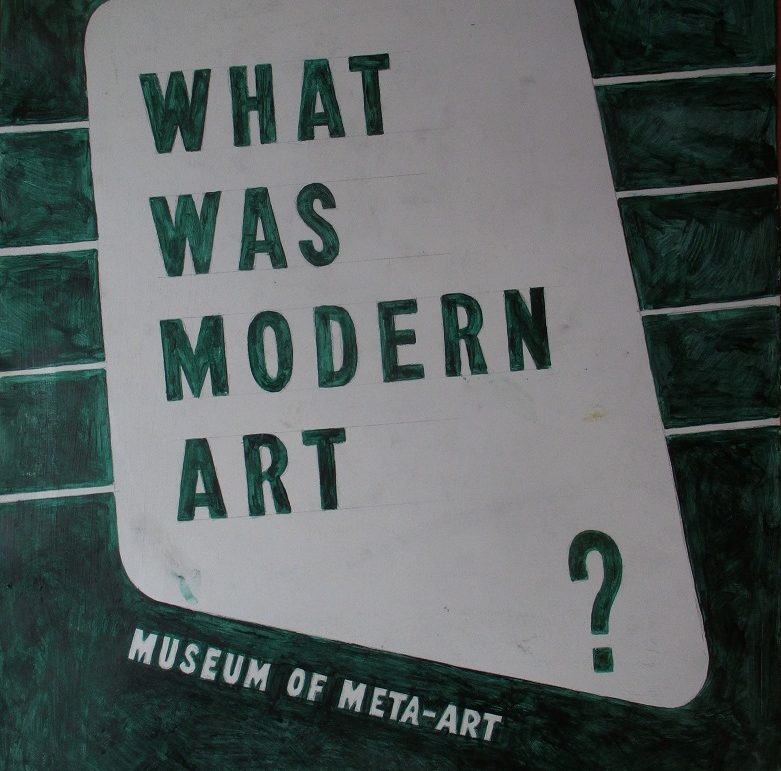Several years ago an exhibition of paintings titled “Not-Now” took place in the New Belgrade Cultural network Foyer (Aug.26, 2013) with the following statement:
The pictures before us represent scenes of times gone by. They were all icons in stories of religion and of art. Some depicted events from the past, while others anticipated the future. Today, they are nothing more than artifacts displayed here neither as art nor as religion. While the pictures of the future became antiquities, the world emerging before us begins to resemble stories from the distant past. In a way it seems that the differences between the future and the past are disappearing, as if they are both becoming the one and the same meta-time that is not-now.
Walter Benjamin-Recent Writings

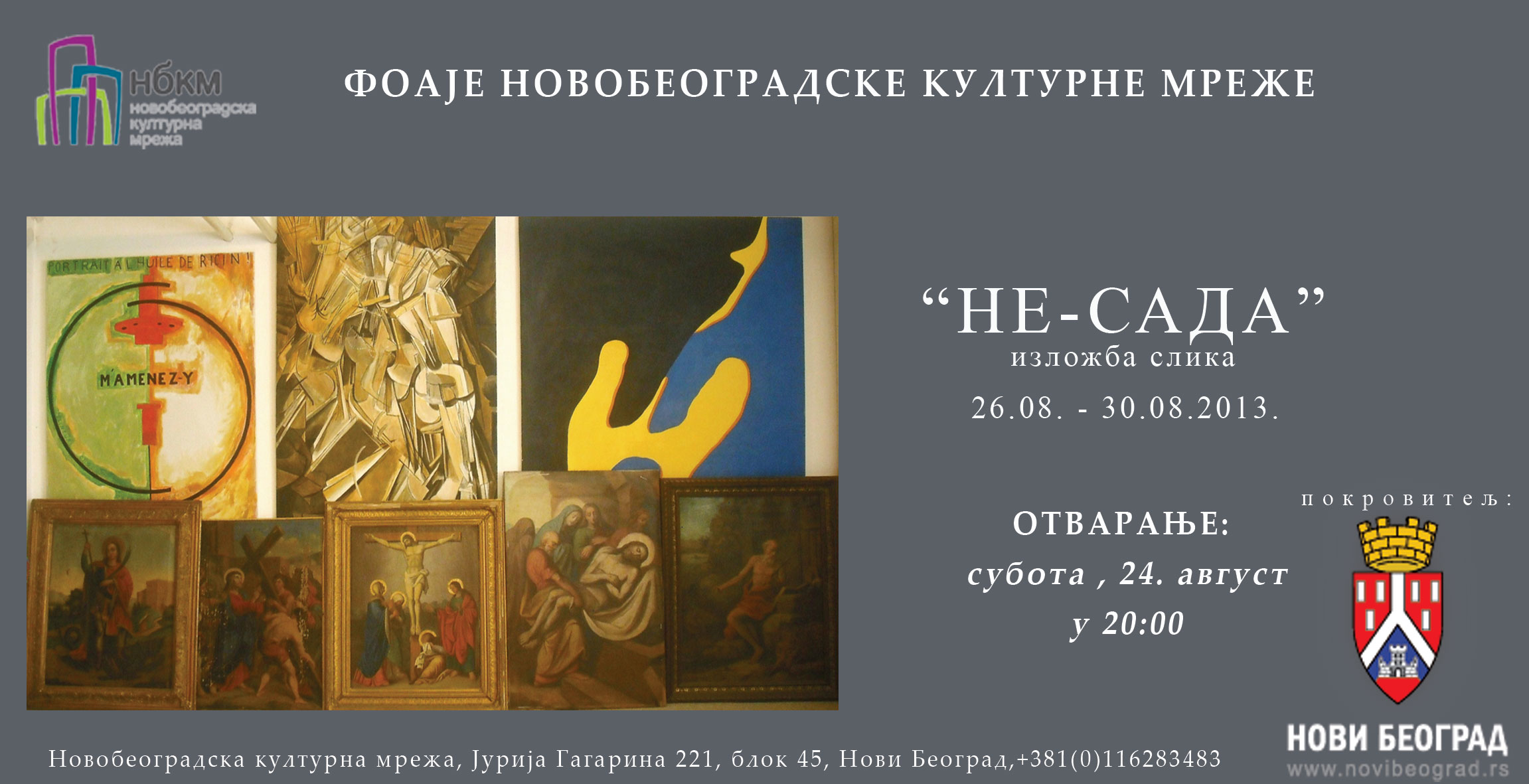
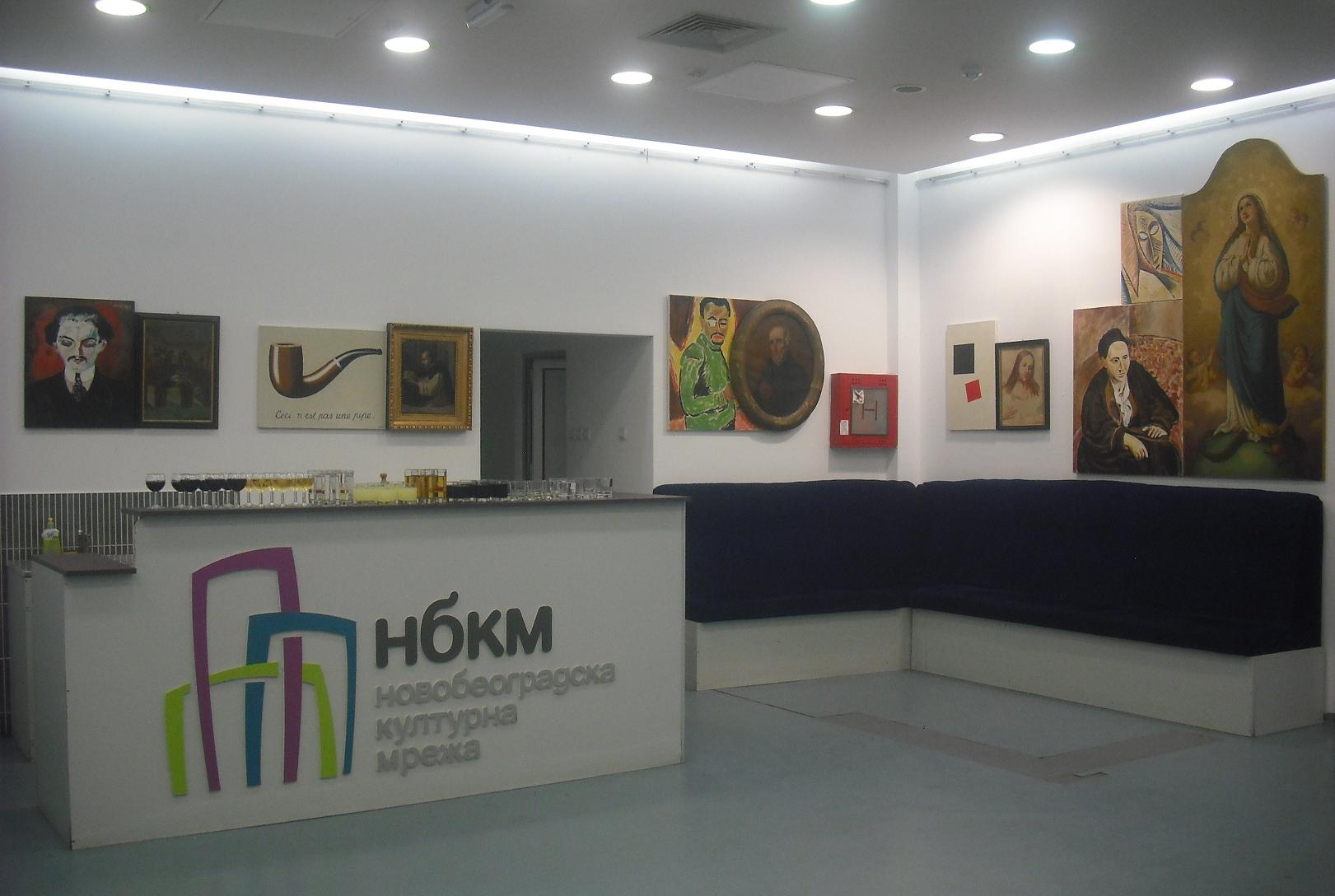
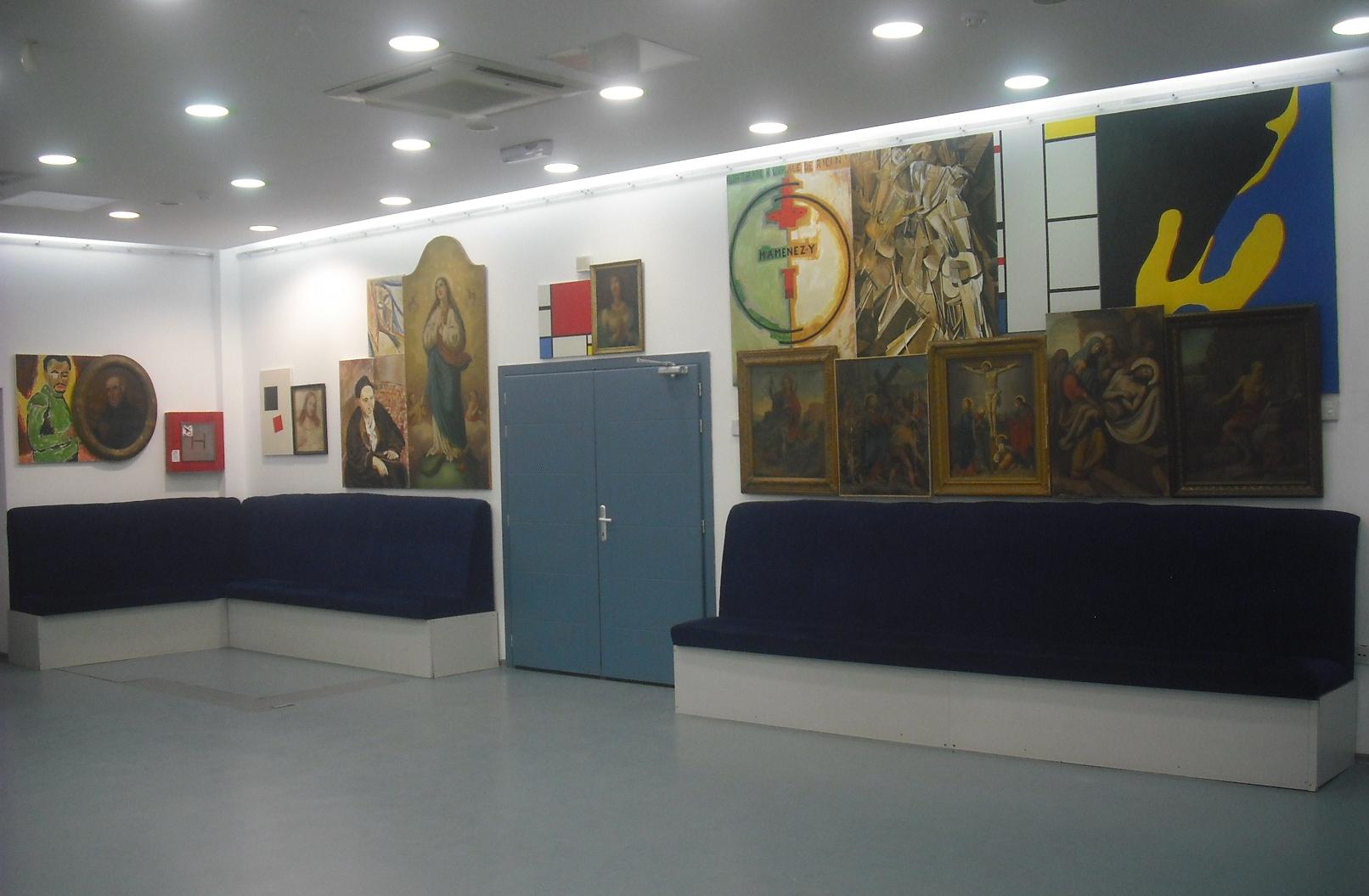
As it was announced, the exhibition took place in a theater foyer of “New Belgrade Cultural Network” located on the outskirts of the city and lasted only a couple of days. The exhibition consisted of paintings, pre-modern(religious) originals placed after or overlapping copies of 20th century modern art as if in this installation modern precedes pre-modern. Interestingly, here pre-modern was presented with original works although for them the notion of originality was irrelevant, while modern was presented with copies, an antithesis of the key notion of modern art – originality.
During the opening evening the beats of The Blue Danube waltz from the film Odyssey 2001 could be heard playing in the background.




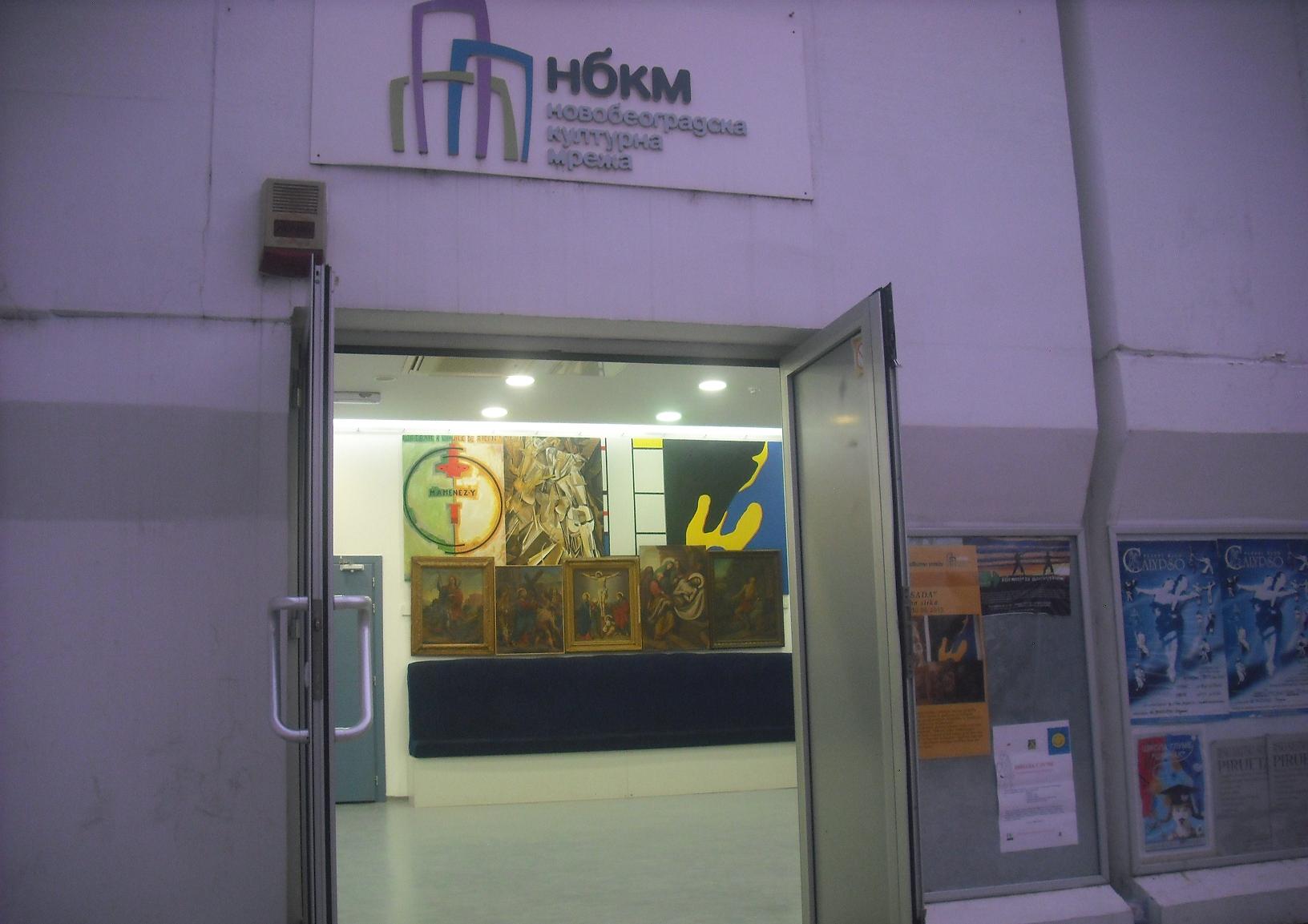
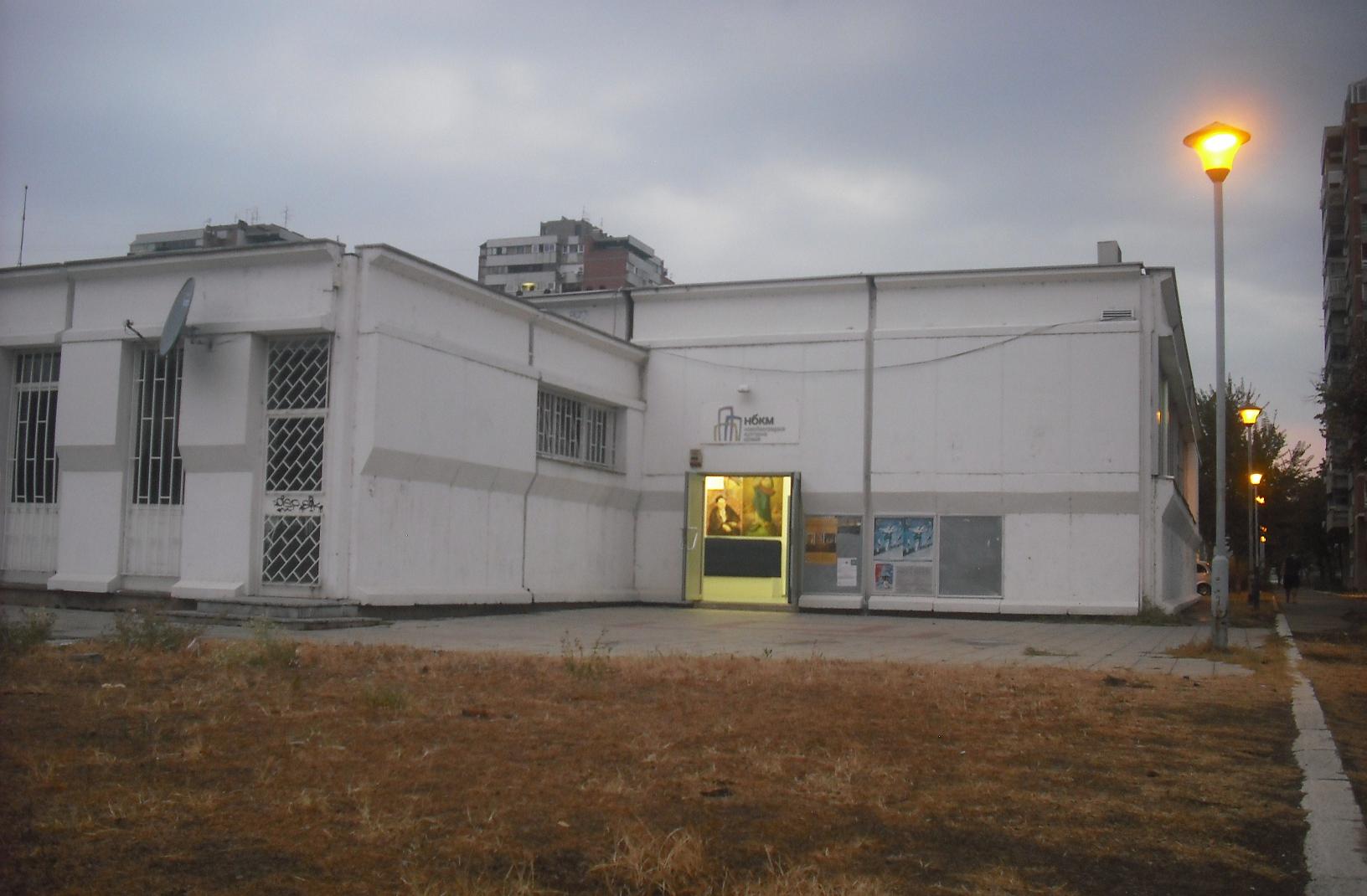
Four years later(2017) a larger part of this installation was reconstructed at the Van Abbemuseum in Eindhoven and included in the long term exhibition titled The Making of Modern Art, as the last room of this complex and multilayered exhibition.


The installation was placed in a room which opposite wall was entirely covered with a mirror. Entering the room visitor first see the mirror reflection and then the wall with actual works. Inside the room one could hear a voice reading On Kavara’s One Million Years(Past and Future) No. 9-24, (1969- )



Then in November 2020 those works from 2013 exhibition not included at the Van Abbemuseum show, together with some additional works, were exhibited in the Belgrade alternative space Ostavinska under the title NOT-NOW Fragments with this statement by Walter Benjamin: Exhibition could define a theoretical platform that is not assessable to words/text.


Not-now Fragments
Seven years ago, an exhibition of paintings called Not-Now was held in the lobby of the New Belgrade Cultural Network. Based on a recent text by Walter Benjamin, the exhibition presented a series of religious pre-modern paintings along with copies of iconic works of modern art. On that occasion, modern paintings were exhibited in front of the pre-modern ones or partially covered them, as if the images of the future became antiquities, and the world that appeared before us began to look more and more like stories from the distant past. (W. B).
Fragments of the exhibition Not-now were set up in the Ostavinska Gallery on the initiative of the Serbian Fine Arts (Srpske lepe umetnosti) from November 2-7, 2020

At the entrance were presented documents(postcard, poster) and installation views from the 2013 exhibition(left) and also from the ongoing installation(right).

The installation included a large mirror with the installation views echoing the Van Abbemuseum with following info:
The Making of Modern Art
Van Abbemuseum -Eindhoven
Most of the Not-now installation is on display at the Van Abbemuseum (Eindhoven) as part of their current exhibition Making of Modern Art. Inside that installation, the sound work of On Kawara One Million Years( Past and Future) 9-24, (1969-) which, thanks to the Van Abbemuseum, can be heard here as well.





Across the street from the “Ostavinska” gallery entrance is a “TV and Video Service Shop” with the blue-white stripes curtains resembling the iconic work by Daniel Buren. This coincidence was used for an additional work to the exhibition. Incidentally, above the shop’s door there is a blue-white logo of “Philips” company which happened to originate from Eindhoven not far from the Van Abbemuseum where the first part of the “Not-now” installation was on display at that time.



Since the exhibition was taking place during the corona pandemic, for the opening evening many visitors came with the masks most of the time standing on the narrow sidewalk outside of the gallery. At some point on the loud speaker could be heard voice of Jelena Vesić, prevented to appear in person, reading the following text:
On this occasion, I will address you as a doctor and as a man, not to say a woman.
My first honor is to open such a solemn and rare event in the magnificent Legacy Gallery. There used to be a multi-way walkway above this street that connected the two wings of the exhibition space with a cafe, a bookstore, a pastry shop, a casino, a beauty salon, a gym and a hall with orgasmotrons, machines in which you could experience sexual pleasure as compensation. you would not be satisfied with an exhibition, or coffee.
It was neither now nor then, but not right now.

“Not now”, in the sense in which this term encompasses civilizational progress, an enormous and aggressive amount of supply and demand in the world of the human and the non-human, appears to me in the English translation of Not Now want to register – Not Now, do you want to install this and that program Not Now.

This exhibition is about the juxtaposition of copies of modernist paintings, most often Mondrian and religious representations of Jesus, the Mother of God and the apostles. Here, Mondrian plays the role of a great representative of the story of the Modernist creative novum, the most direct paradigm of what is called creation in art, while Jesus, the Virgin and the apostles stand at the crossroads of two stories – they belong to the artistic narrative, art history narrative and Christian religious narrative. At the same time, these are images that, in the terminology of image theory, are created as a reflection of the original or archetype and functional objects that have a certain utilitarianism within religious practice. Through the juxtaposition of religion and art, the exhibition deals with one phenomenon that is perhaps best described by Walter Benjamin, whose translation you are getting, and which speaks of the ideological function of the master-narrative.

Benjamin states that at one historical moment the master narrative was religion, the Christian faith, and that the whole world was immersed in that truth and seen through the prism of that story as truth – truth whose evidence was precisely relics and religious images. That is, the truth of that religious narrative survived precisely through certain artifacts as evidence of that truth. With these narratives, Benjamin opposes the master-narratives of art, civilization and the historical progress of the Enlightenment, implying that the works of art took over the function of relics of the modern age and became evidence of the truth of the dominant historical story. The works of art were indicators that history has always existed and that it is precisely the story that is embedded in the domain of our knowledge – the truth itself.

This exhibition talks about the ruin of that world in the time of post-truth and obviously the time of post-art, which neither was, nor is, nor will be, but is inhabited by a fictional time zone that we can call the zone Not Now.

Ending date:
Audience (shouts) – When?
Me – Not now!
Audience – When?
Me – Not now!
Audience – When
;Me – In One Million Years.


Soon after, by some chain of events, this scene from the opening evening at Ostavinska gallery appeared as a subject in a painting by Richard Nielsen, who lives and works in Los Angeles, and it is currently on display in his exhibition PAST IMPERFECT at the Track 16 Gallery in LA.





